10 Simple Tour de France Questions – Answered
How do the riders of the Tour de France pee? Find out right here, along with another nine-must-know TdF facts.
As you watch the 2023 Tour de France, you might have some questions. This information will transform you—quickly—into a Tour expert. First, the basics: The 110th Tour de France will take place from July 1 – July 23. It’s good to know that the route changes every year. And in 2023, the Grand Départ is in the Basque Country of Spain, with the typical finish in Paris after 21 stages.
Once you’ve figured out the other essential logistics (What’s up with the jersey colors? What’s a breakaway?), a few more nuanced questions still linger. As you get ready to watch the 2023 TdF, here are fun facts and answers to 10 questions you’ve likely wondered about the race, which will make you enjoy watching it even more.
How fast do the riders go?
A Tour pro’s ability to produce more power for longer means that they can really hammer over different types of races and terrains.
Average Time Trial Speed
Average Rider: 30-32km/h | Tour Pro: 50-55km/h
Average Speed on Flat Terrain
Average Rider: 25-30km/h | Tour Pro: 40-50km/h
Maximum Sprint Power
Average Rider: 600 to 800 watts | Tour Pro: 1 200 to 1 400 watts
How much prize money does the Tour de France winner get?
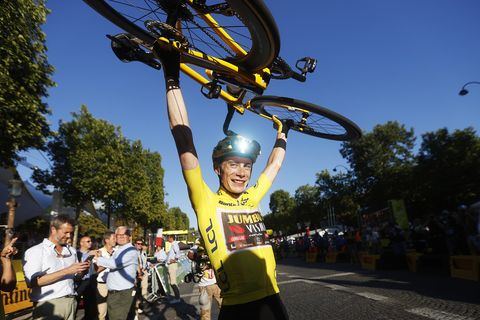 Getty Images
Getty ImagesAccording to the [utm_source|[utm_campaign|[utm_medium|[gclid|[msclkid|[fbclid|[refdomain|www.bicycling.com[content_id|9c488e65-a29e-4142-af56-a2891099e509[content_product_id|748a20f7-3c4e-4fd2-9e69-3dfd21e68f5f[product_retailer_id|f91bbd1b-59fe-4093-9682-5e940dbff18e[lt|[optxid|[optvid|”>Tour de France website, a total of around 2.3 million Euros will be awarded to the teams and riders, including 500,000 Euros to the winner of the final individual general classification (who usually shares his money with his team). That is equal to roughly R10-million. Second place GC is awarded 200,000 Euros, third place GC walks away with 100,000 Euros, and so on. Other top prizes go to stage winners, who get 11,000 Euros, and the winners of the points classification and mountains classification, both of whom receive 25,000 Euros. Riders can also win money during intermediate sprints and certain climbs. There’s even prizes for the five best teams and the four best young riders.
Who has won the most Tour de France titles?
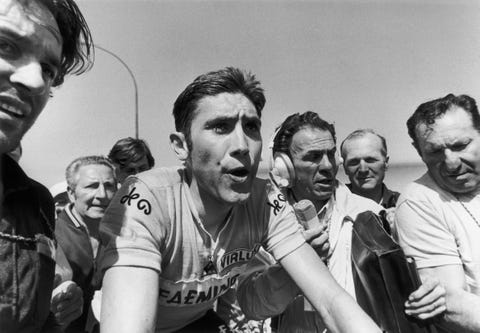 Keystone-France
Keystone-FranceThat depends whether you’re counting titles that have been taken away (cough—Lance—cough). If not, the answer is a four-way tie between Jacques Anquetil, Miguel Indurain, Eddy Merckx, and Bernard Hinault who won five each.
Has the Tour ever been cancelled?
 Risorgimento via Wikipedia Commons
Risorgimento via Wikipedia CommonsOnly the two World Wars caused the race to be put on hold. All in all, battles cost the world 11 editions of the Tour: WWI broke out a few days after the 1914 Tour and didn’t run again until 1919. It went on hiatus again during WWII from 1940 to 1946, running again in 1947—two years after the end of the war.
“WWI was a war of attrition and the French were fighting the whole time. There were several Tour winners who were killed in the trenches,” says Christopher Thompson, author of The Tour de France: A Cultural History. “But in WWII, France was defeated and occupied quite early, and that was different. There was a government that went along with the Nazis, so there was some racing to prove that things were normal under the occupation, but the Tour wasn’t held. After, France was so devastated by WWII that it took a while to get restarted.”
The Tour was postponed in 2020 due to the COVID-19 pandemic, but eventually held in August of that year.
Why is the leader’s jersey yellow?
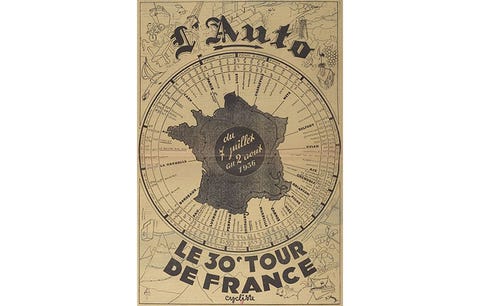 JeanBono via Wikipedia Commons
JeanBono via Wikipedia CommonsSimple, says Thompson: L’Auto, the newspaper that first started and sponsored the race, was printed on yellow paper, so it was essentially an advertising strategy. (That’s also why the Giro d’Italia leader’s jersey is pink—the newspaper that created the Giro was printed on pink paper.) By the way, yellow in French is jaune and the jersey is called maillot jaune.
Has anyone ever died in the Tour?
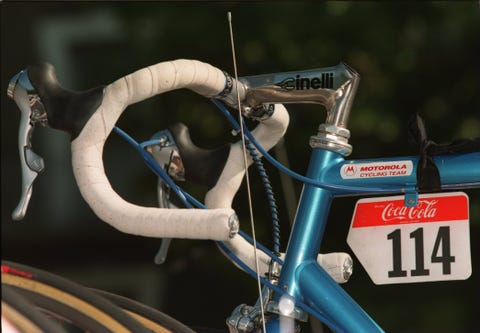 Mike Powell//Getty Images
Mike Powell//Getty ImagesSadly, yes. Four riders have passed away over the course of the race’s history. In 1910, Adolphe Heliére drowned on a rest day; in 1934, Francisco Cepeda crashed into a ravine on a descent; in 1967, Tom Simpson passed away after a heart attack; and in 1995, Fabio Casartelli was killed after crashing and hitting his head.
Unfortunately, there have also been a number of horrific crashes. To see how grueling the race is, even for those who don’t fall or crash, watch Unchained on Netflix.
What do Tour riders do on rest days?
They ride! At least, they go for short rides to keep their legs from cramping up. Max Testa, M.D., former team doctor for a variety of Tour teams including Team BMC, 7-Eleven, and Motorola, says that the short rides (which can be up to three hours!) help keep inflammation at bay and keep muscles ready for another hard day in the saddle.
Is there a women’s Tour de France?
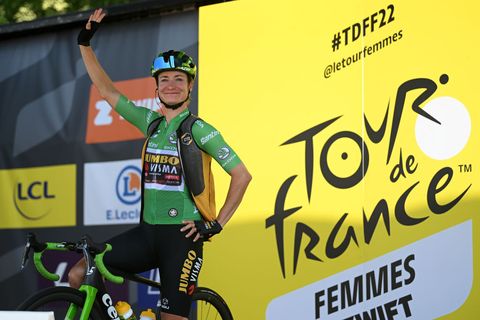 Dario Belingheri//Getty Images
Dario Belingheri//Getty ImagesAfter a number of iterations over the years, the 2023 Tour de France Femmes avec Zwift will be held from Sunday, July 23 to Sunday, July 30. The course is 594 miles and includes a mountain stage, four flat stages, two hilly stages, and the time trial. They will not race at all in Paris.
Who were the oldest and youngest Tour cyclists?
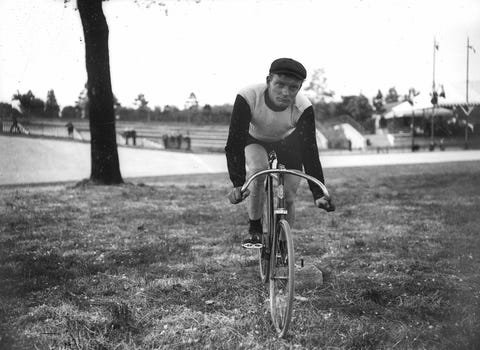 Branger//Getty Images
Branger//Getty ImagesBoth distinctions occurred in 1904: Henri Paret was the oldest competitor at age 50 when he competed in 1904, while 20-year-old Henri Cornet was the youngest. Cornet was also the youngest winner. The oldest winner was in 1922, when 36-year-old Belgian Firmin Lambot took the yellow jersey.
Do racers make their stage data public?
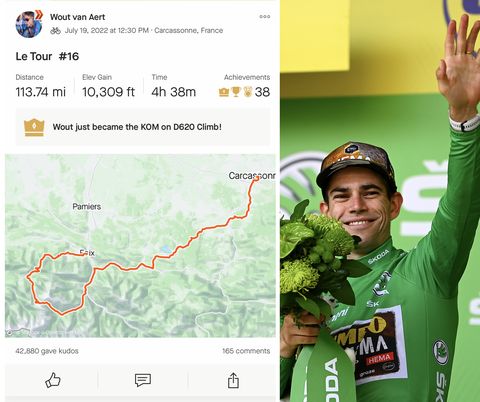 Strava / Getty Images
Strava / Getty ImagesSometimes—but don’t count on them spending their evenings uploading their numbers. Still, you can keep an eye on some top pros’ Strava accounts.
How much do Tour de France bikes weigh?
In the 1900s, a Tour de France cyclist pedalled up and down mountains on a bike that weighed a whopping 18kg. In fact, Fiets, a Dutch cycling magazine, showcased a bike from the 1903 race weighing 17.9kg pounds with a fixed gear. Today, bikes weigh just under 7kg—but not any lower, since the UCI’s minimum bike weight is 6.8kg.
What tire pressures do the cyclists run?
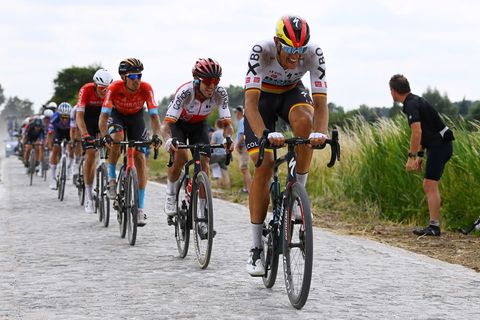 Tim de Waele//Getty Images
Tim de Waele//Getty ImagesEvery racer and mechanic has a specific (top-secret) tire pressure that they considers to be optimal, but there are some guidelines.
“In general, with all of those variables [like weather and riders’ personal preference], that tire pressure is 8 to 8.5 bar for the road stages, and then 9.5 to 10 bar for the time-trial stages. Around 115 psi in the front and 125 psi in the back for the road stages and 130-135 psi for time-trial stages. And we drop that by 10 or 15 for rainy days,” Geoff Brown, veteran mechanic for Garmin-Sharp and EF Education First teams tells Bicycling.
They run about 10 psi lower in the front for more control, as well, and with tubular tires, they tend to run slightly lower pressures. Clinchers need to be kept around 110 to 120 psi in order to avoid pinch-flatting.
How do the competitors go to the bathroom?
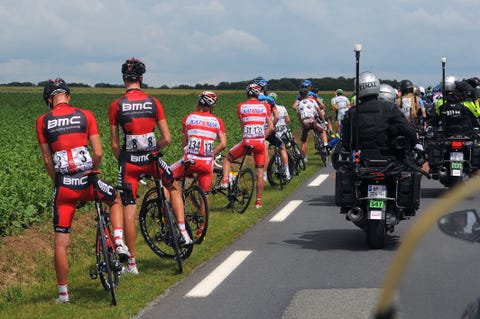 Tim de Waele//Getty Images
Tim de Waele//Getty ImagesIt’s a long, hot ride so the pros are hydrating a lot. In the first five to 10 minutes of a race, when the pace is more leisurely, “riders pull to the side of the road, pull their shorts down just like you would underwear—you know, pull front down, do your business,” says retired pro cyclist Ted King, who’s ridden the Tour de France several times.
During this neutral roll out, King says, there’s plenty of time to catch back on to the peloton before the race starts in earnest. Fortunately, nature calls for all riders. “It’s a lot easier to wait for a lull in the race when a big fraction of the peloton pulls to the side of the road rather than doing it solo, because that solo chase is tough!” King says.
Of course, riders also pee off the bike while riding, although it requires having their teammates pedal while they go. “If peeing to the right, your right leg is in a 6 o’clock position, left at 12. Left hand on the handlebars, right hand holds the shorts down, and coast while relieving yourself,” King advises.
READ MORE ON: pro racing tour de france 2023



